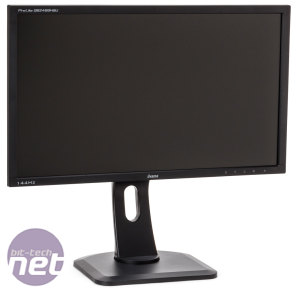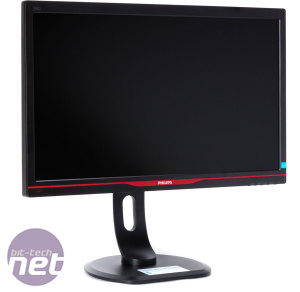
120Hz and 144Hz
If you want to reduce the sensation of motion blur and not suffer any trailing images, you simply need a very fast panel in your display. 120Hz panels were originally designed to display stereoscopic 3D (60 images per second for the left eye and 60 for the right eye), but they have their benefits in 2D as well. One might even say that 2D is a vastly more useful application of the technology. Due to the more exacting requirements, a higher quality scaler, more expensive interfaces as well as the smaller production scale, the price of these displays tends to be significantly higher than that of common 60Hz models. You can easily count on a premium of £70 to £100. To use these screens to full effect, you also need a high-end graphics card capable of driving 120fps, as well as a DisplayPort, HDMI 1.4 or dual-link DVI interface and cable.As of a few years ago, we’re also seeing 144Hz monitors, but that is mostly marketing. The benefit over 120Hz is next to none, while the corresponding demands on your graphics card are even higher. The benefits of 120Hz over 60Hz, however, are very clear indeed. You will experience less screen tearing with Vsync off, as the effect of the tearing is less visible, and with Vsync on you of course won’t have any tearing, but your graphics card can also sync to 60, 40 or 30Hz if it can’t manage the workload. A 60Hz screen can only revert to 30Hz, a much more jarring reduction in frame rate.
Even when not playing games, a 120Hz screen delivers a better experience, visible with simple things such as moving windows or the mouse cursor around. Everything simply feels smoother, although we’re sure you won’t make the extra expense just for a nicer desktop experience. However, for FPS games, we would highly recommend making the investment, as the shorter response time means a significant decrease in ghosting and motion blur.
Other Factors
With that out of the way, it should be noted that there is of course more to a gaming screen than fast pixel response. A high contrast ratio enables you to see more details, especially in very dark and very light parts of the image. Correct gamma values and colour accuracy result in a more lifelike, vibrant picture. A colour temperature around 6,500K will result in realistic colours, neither too ‘warm’ (orange/red) or ‘cold’ (blue). Good viewing angles mean the picture remains bright and correctly displayed even when not viewed straight-on. A higher resolution can give you an advantage thanks to a larger field of view. And then there are various options in the onscreen menu, such as a special gamma settings to bring out details in dark areas, or edge enhancement to make it easier to spot targets – these are becoming more and more common and while they don’t exactly result in a prettier picture, they can be helpful in obtaining the tiny advantage needed to land that headshot before your opposite number does.
MSI MPG Velox 100R Chassis Review
October 14 2021 | 15:04













Want to comment? Please log in.